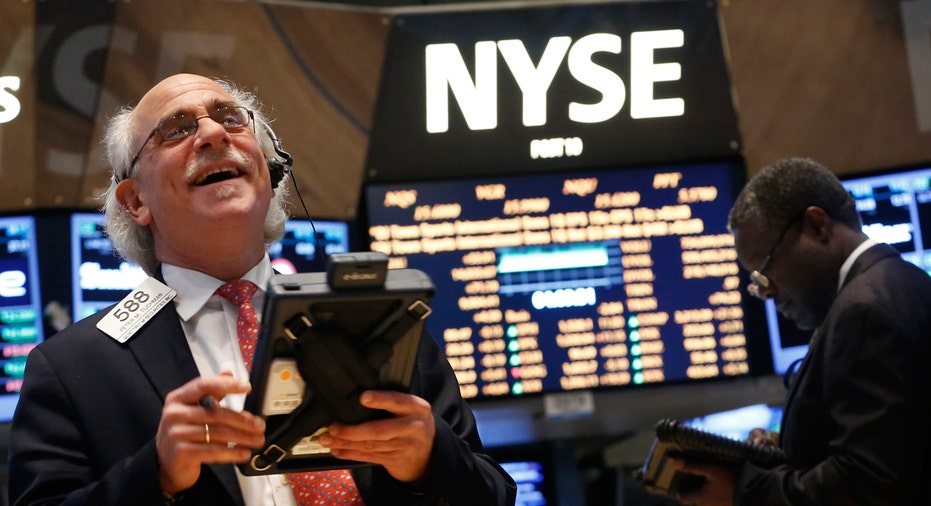Wall Street Stages Jobs-Fueled Rebound Rally

Wall Street jumped on Friday after a better-than-expected November jobs report, though the energy sector dropped on OPEC's production meeting.
The Dow Jones Industrial Average gained 369 points, or 2.12% to 17847. The S&P 500 surged 41 points, or 2.05% to 2091, while the Nasdaq Composite gained 104 points, or 2.08% to 5142.
Energy was the only sector in negative territory following the OPEC decision, while consumer financials and telecommunications led the way higher.
Today’s Markets
After a steep selloff in the prior session ignited by disappointment from investors who expected even more monetary-policy stimulus from the European Central Bank, traders all over the globe kept a keen focus on the U.S. non-farm payrolls report, which came in above expectations – and what that means for the Fed.
The Labor Department reported the U.S. economy added 211,000 jobs during the month, above expectations for the addition of 200,000 jobs. The unemployment rate held steady at 5%, as expected. While the labor force participation rate ticked up to 62.5% from 62.4%, while Wall Street expected it to hold steady.
The better-than-expected report, which put the three-month average job gain at 218,000 per month, and essentially gives the Fed the green like to raise rates at its December 15 – 16 Federal Open Market Committee meeting. Investors have widely expected the central bank to hike short-term interest rates from historic lows at that meeting.
Jack Flaherty, co-portfolio manager of the GAM Unconstrained Bond Strategy, said the report was solid across the board – he pointed specifically to the uptick in private payrolls, which rose 0.2%. He said that this likely gives the Fed the last little push it needs to give rate hikes the green light in two weeks.
While the jobs report itself wasn’t considered “weak,” other data out this week that the data-dependent Fed has said it is keeping a close eye on, hasn’t fared as well. Recall, ISM’s gauge of manufacturing activity slipped into contraction for the first time since 2012, and registered the lowest level since 2009. The service sector didn’t fare much better, recording an unexpected dip last month.
But Flaherty said individual monthly reports aren’t enough to make the Fed stand pat on rates – they’re looking at the overall trend.
“Over every couple of months, you can have a lot of noise in the data, including payrolls. We got a not-so-good report a couple months ago. We think in terms of more a rolling three-month average,” he said. “I don’t’ think we’re having a huge rebound and I’m not expecting a cray economic recovery, but it’s solid and it’s got good footing.”
In recent action, the yield on the 10-year U.S. Treasury bond declined 0.062 percentage point to 2.27%. Meanwhile, in currencies, after a nearly 4% jump in the prior session, the euro gave back some ground against the U.S. dollar, falling 0.72% to $1.086. The greenback, meanwhile, was up against a basket of global currencies.
Peter Kenny, independent market strategist, said in a note that Thursday’s euro rally – the biggest for the currency in years – could actually make the case for December rate liftoff easier for the Fed.
“The euro is no longer a one-way trade and in that event, the euro’s unpredictability positive price action versus the U.S. dollar will actually make a move on rates by the Federal Reserve a bit easier – if it does materialize,” he said.
Elsewhere in the market, global oil prices reversed course after OPEC’s policy meeting. Investors closely eyed the gathering in Vienna, which came just days after Saudi Arabia said it would be willing to consider a cut to production in an effort to stabilize prices if Iraq, Iran, and non-OPEC members agreed to cooperate. Still, the oil cartel was said to keep production steady, and increasing its output ceiling at 31.5 million barrels a day, a source told Reuters.
“The Saudis want to keep their foot on the gas, and they really have an idea that they don’t want a big alternative shale player to take market share from them,” Flaherty said. “They need more buy in from other partners, and they won’t get it. You have more capacity coming in, they’ve been above quotas for a while, and I expect that to continue.”
U.S. crude prices sank 4.17% to $39.97 a barrel, the fifth-lowest settle for the year, while Brent, the international benchmark, dropped 4.15% to $43.00 a barrel.
Elsewhere, metals were higher as gold gained 2.21% to $1,085 a troy ounce. Silver gained 3.4% to $14.56 an ounce, and copper gained 0.82% to $2.08 a pound.



















